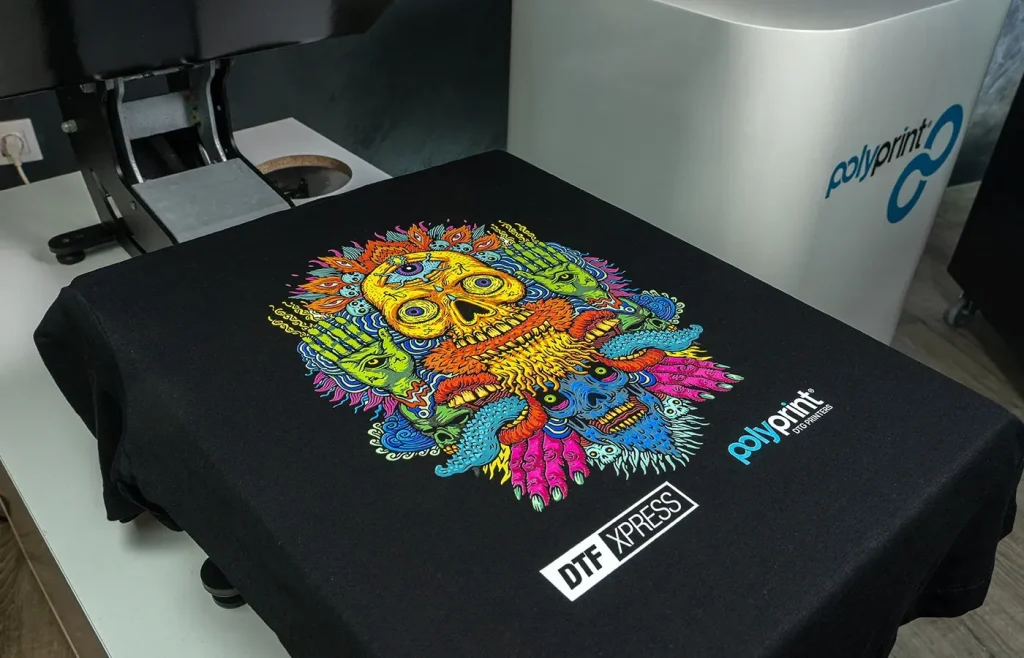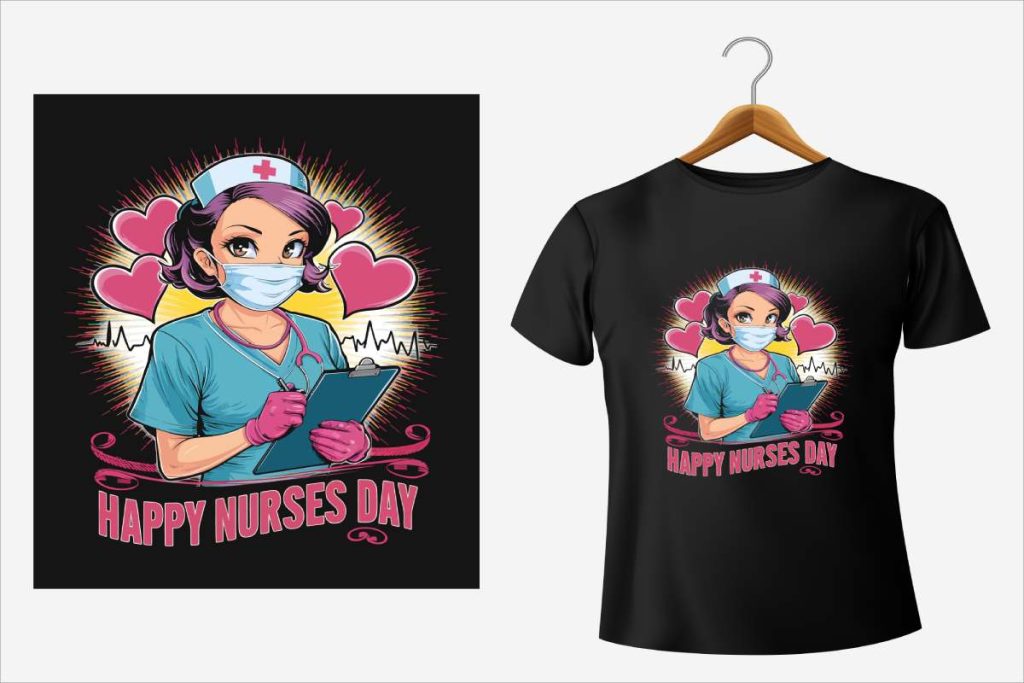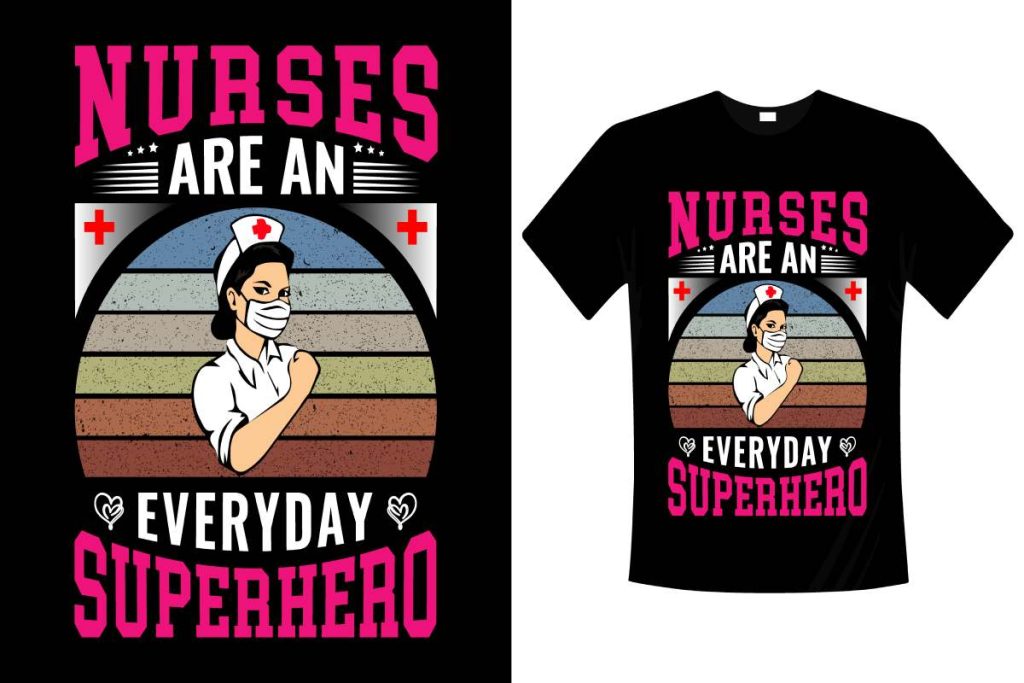DTF printing, or Direct-to-Film printing, is revolutionizing the fabric printing landscape, offering remarkable versatility and quality for custom apparel. As this innovative method gains momentum, its cost-effectiveness becomes increasingly evident, allowing businesses to keep expenses manageable while meeting rising consumer demand. The benefits of DTF printing also extend to faster production times, making it a more efficient choice compared to traditional screen printing techniques. With sustainability becoming a significant concern for both consumers and brands, DTF printing emerges as an eco-friendly option that minimizes waste and resource usage. In light of the current DTF printing market trends, companies investing in this technology can expect not only economic advantages but also a strong alignment with modern sustainability goals.
Direct-to-Film printing, often referred to as DTF technology, is reshaping the approach to printing on fabric, catering to the unique needs of the custom apparel market. By leveraging advanced printing techniques, businesses can achieve vibrant, high-quality designs at a fraction of the cost associated with more traditional methods like screen printing. The economic benefits associated with this technique are complemented by its rapid production capabilities, enabling quick turnarounds for customer orders. Additionally, with a growing emphasis on sustainability in printing practices, DTF offers innovative solutions that support environmentally responsible production. As we explore the myriad advantages and market dynamics surrounding DTF printing, it is clear that this technology is set to become a cornerstone in the future of fabric decoration.
The Advantages of DTF Printing for Small Businesses
Direct-to-Film (DTF) printing has emerged as a game-changer for small businesses looking to establish themselves in the custom apparel market. One of the primary advantages is its low barrier to entry. Compared to traditional methods like screen printing, DTF requires a significantly lower initial investment in equipment. This opens up opportunities for entrepreneurs to start their printing ventures without the burden of hefty startup costs, making it an attractive option for those entering the market.
Additionally, the flexibility that DTF printing offers is unparalleled. It allows businesses to print designs on a variety of substrates without the need for extensive preparation or setup. This versatility means that small businesses can quickly adapt to changing customer demands, producing custom designs efficiently. By leveraging DTF printing, small business owners can capitalize on niche markets that require rapid turnaround times, further enhancing their competitiveness.
Cost-Effectiveness of DTF Printing
The cost-effectiveness of DTF printing is elevating its status in the printing industry, especially among businesses focusing on small to medium orders. Organizations utilizing DTF technology can achieve significant savings in both material and labor costs. DTF eliminates the need for screen preparation, reducing the overall time and resources spent on each print job. This efficiency translates to lower operational costs, which is crucial for maintaining a healthy profit margin in a competitive marketplace.
Furthermore, as technology advances, the cost of DTF inks and films has decreased. This improvement means that businesses can produce high-quality prints at a fraction of the cost compared to traditional printing methods. The ability to print vibrant, intricate designs quickly without substantial material waste underscores DTF printing’s role as a cost-effective solution for custom apparel production.
DTF Printing vs Screen Printing: What Businesses Need to Know
When comparing DTF printing to traditional screen printing, several factors emerge that can significantly influence a business’s choice of technology. Screen printing typically involves higher setup costs due to the need for specialized screens and inks for each design, which can take time and resources away from production. In contrast, DTF printing requires minimal setup, allowing for quick job changes that are ideal for short runs or one-off custom designs.
Moreover, while screen printing excels at high-volume runs, DTF printing offers exceptional quality on demand. This capability enables businesses to create a diverse range of products without the limitations often associated with screen printing. Thus, for shops targeting personalized or bespoke offerings, DTF printing demonstrates a clear advantage in both flexibility and cost-effectiveness.
Sustainable Practices in DTF Printing
Sustainability is becoming increasingly essential in consumer purchasing decisions, and DTF printing is navigating this trend effectively. This method often utilizes fewer resources, such as water and energy, compared to traditional printing methods like screen printing. The reduction in waste generated during the printing processes positions DTG printing as a more eco-friendly option for businesses looking to minimize their environmental impact.
Additionally, many DTF inks are formulated to be less toxic, aligning with growing consumer demand for safer, cleaner products. By adopting DTF printing, businesses not only enhance their commitment to sustainability but can also appeal to a generation of environmentally conscious consumers seeking out brands that prioritize eco-friendly practices.
Current Trends in the DTF Printing Market
The DTF printing market is currently experiencing significant growth, with projections indicating a compound annual growth rate exceeding 15% over the next few years. This surge is influenced by rising consumer demand for personalized and customized apparel, as more individuals seek unique designs that reflect their identities. The increasing popularity of on-demand printing also fuels this growth, paving the way for businesses to explore innovative offerings.
In addition, advancements in technology contribute to the expansion of the DTF printing market. Innovations in inks, films, and printing techniques are continually enhancing print quality and efficiency, making it an even more attractive option for businesses. As trends continue to evolve, staying informed about the latest developments in DTF printing will be essential for companies hoping to capitalize on the expanding market opportunities.
Challenges and Solutions in DTF Printing
Despite the numerous advantages that DTF printing offers, businesses must also navigate specific challenges, such as issues related to color vibrancy and print durability compared to other methods like Direct-to-Garment (DTG) printing. Color accuracy and washability can significantly affect customer satisfaction, potentially impacting a business’s reputation. Addressing these concerns is vital for businesses looking to succeed in an increasingly competitive market.
Fortunately, advancements in ink formulations and print technology are continuously improving the quality of DTF prints. Manufacturers are actively working to tackle these challenges, ensuring users can achieve high-quality results that meet consumer expectations. By investing in the latest technology and staying informed about industry advancements, businesses can mitigate these issues and fully leverage the benefits of DTF printing.
Frequently Asked Questions
What are the cost-effectiveness benefits of DTF printing compared to other methods?
DTF printing is highly cost-effective due to lower initial setup costs and reduced material expenses. Unlike traditional screen printing, which requires expensive screens and setup, DTF printing can start with an investment between $10,000 to $30,000. Additionally, DTF’s material costs have decreased over time, making it cheaper per print, especially for small to medium orders.
How does DTF printing compare to screen printing in terms of efficiency?
When comparing DTF printing to screen printing, DTF offers superior efficiency, particularly for smaller orders. DTF printing doesn’t require the lengthy setup times associated with screen printing, allowing businesses to fulfill custom orders quickly. This efficiency leads to reduced labor costs and shorter turnaround times, making it a preferred choice for fast-paced environments.
What are the sustainability benefits of DTF printing?
DTF printing is considered a more sustainable option compared to traditional printing methods. It utilizes less water during the printing process and generates reduced waste, aligning with environmentally conscious business practices. By adopting DTF printing, companies can appeal to eco-aware consumers while minimizing their ecological footprint.
What are current market trends for DTF printing in 2023?
The DTF printing market is experiencing rapid growth, projected to exceed a compound annual growth rate (CAGR) of 15% in the coming years. This growth is driven by the increasing demand for customized apparel and the need for efficient, cost-effective printing solutions, indicating a strong future for DTF printing businesses.
How do profit margins for DTF printing compare to other printing methods?
Businesses that utilize DTF printing can achieve impressive profit margins, typically ranging from 40% to 60%. This profitability is particularly noteworthy for companies focused on custom orders and quick production cycles, making DTF printing a strategically attractive choice for maximizing revenue in the printing industry.
What challenges do users face with DTF printing, and how are they being addressed?
While DTF printing offers many advantages, users have reported issues with color vibrancy and washability when compared to DTG printing. However, advancements in ink formulations are being actively pursued to enhance the quality of DTF prints, effectively addressing these challenges and improving user satisfaction in the long run.
| Key Points | Details |
|---|---|
| Overview of DTF Printing | DTF printing transfers ink from film to fabric using heat, allowing for high-quality designs on various materials. |
| Initial Setup Costs | Costs range from $10,000 to $30,000, which is generally lower than traditional screen printing options. |
| Material Costs | DTF proves cost-effective due to reduced material costs and no screen preparation. |
| Production Speed | Faster fulfillment for small orders compared to traditional methods, resulting in lower labor costs. |
| Profit Margins | Profit margins range from 40% to 60%, especially favorable for custom orders. |
| Sustainability | DTF printing requires less water and reduces waste, appealing to eco-conscious consumers. |
| Market Trends | The market is expected to grow at a CAGR of over 15% due to increasing demand for customized products. |
| Challenges | Issues with color vibrancy and washability are being addressed by improvements in technology. |
Summary
DTF printing is a revolutionary method transforming the landscape of fabric printing, celebrated for its cost-effectiveness and suitability for custom apparel. This innovative technique not only minimizes initial setup and material costs but also promotes faster production speeds and higher profit margins. Businesses can capitalize on the growing demand for personalized items, while maintaining a commitment to sustainability. As the DTF printing market continues to expand, those who embrace this method will find themselves well-positioned for success in an ever-evolving industry.



